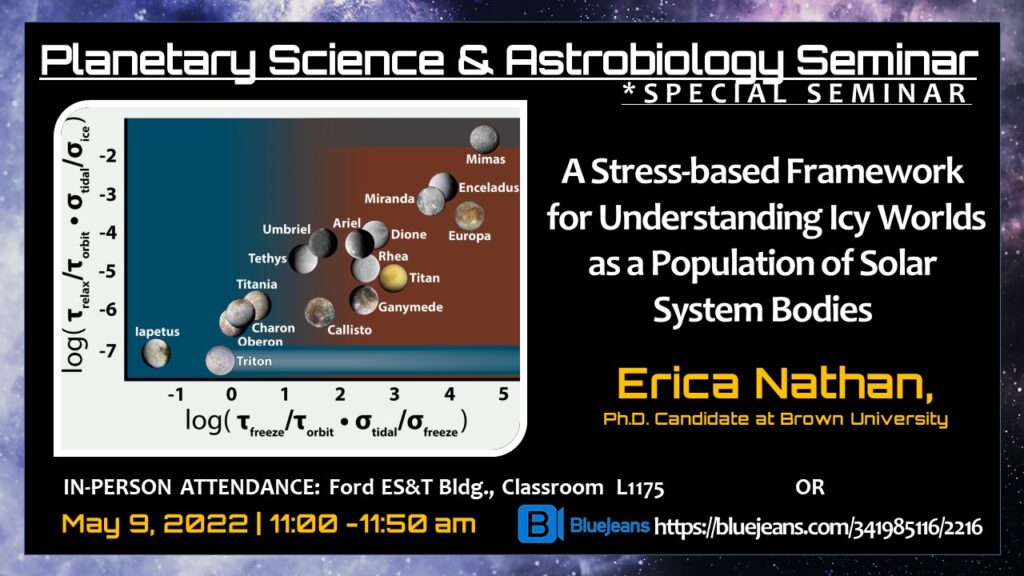PSAS: The fate of water on Mars: Tracing water-rock interactions through isotopic modelling, satellites, and rovers
PSAS: Unlocking Secrets of Earth’s Past Using Microbial Genomes
Astrobiology Fall Distinguished Speaker and Social Event on Sept 2!
Special PSAS: A Stress-based Framework for Understanding Icy Worlds as a Population of Solar System Bodies

Speaker: Erica Nathan, PhD Candidate in the Department of Earth, Environmental and Planetary Sciences at Brown University
Abstract: Icy worlds are among the highest priority destinations to search for life beyond Earth and yet remain a population of Solar System bodies still early in characterization. Building on the legacies of reconnaissance missions, we need a process-based framework to identify the key gaps in our understanding of the evolution of icy worlds, both as a class of objects and for specific bodies. To investigate the processes which control the state of global stress on icy worlds and how these relate to tectonic and cryovolcanic resurfacing through time, we synthesize the geologic histories of icy worlds and build regime diagrams based on a first order set of stress mechanisms. To first order, we find that the evolution of icy worlds depends on the relative importance of freezing versus tidal stresses they experience over time and identify outliers to this trend which require additional planetary modification processes to explain their features. A key outcome of this interpretive framework is the gaps in knowledge it identifies, pointing towards a path forward for advancing our understanding of icy worlds as individuals and a population of Solar System bodies. In particular, higher order processes can be explored through a combination of analog experiments freezing water spheres and numerical modeling.
PSAS: Inferring the past climate of Mars from the ice record
PSAS: Searching for Organics and Minerals in Jezero crater with SHERLOC
PSAS: Mapping lunar water with SOFIA observations of the 6 μm band
PSAS: Microbial isotopic signatures as a tool to study past and present processes in geobiology
PSAS: The martian groundwater environment: redox conditions, diagenesis, and habitability

Speaker: Dr. Rachel Sheppard, Postdoctoral Associate of Planetary Geosciences at NASA’s Jet Propulsion Lab (JPL) with the California Institute of Technology.
